|
|
|
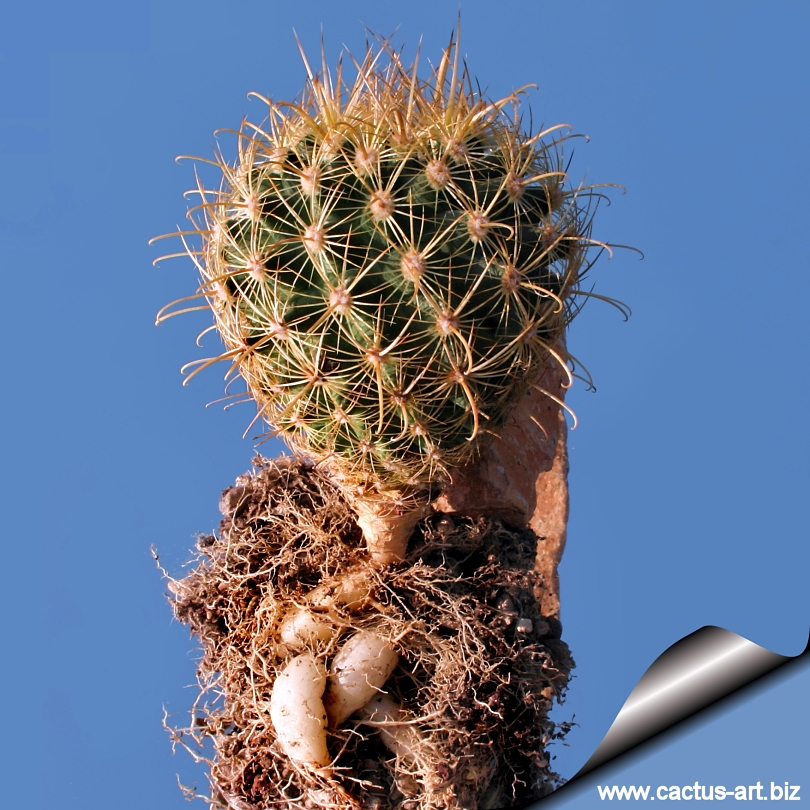
Ancistrocactus megarhizus
SB597 Llera, Tamaulipas, Mexico
The peculiar characteristic of this species species are the
long, fleshy, tuber-like taproots.
The natural hooked spine, was used by Indians to catch tiny fish.
|
|
Description: Solitary cactus (unless injured) until very old age,
or with few branches from ground level when old. This specie has a
tuber-like taproot but it is not a geophyte as the apical meristem is
above ground.
Stem: Cylindric to club-shaped, or spherical, up to 17cm tall, 5-8 cm
in diameter. Seedlings and immature
plants often have narrowly cylindrical stems. With age, the stems broaden
distally.
Spines: Radial spines 13-28 per areole, translucent yellowish,
tips red-brown, longest spines 6 to 28 mm long; central spines 3-4 per
areole;
abaxial central spine tan to whitish 1 per areole, hooked terete
or slightly flattened, generally whitish or light brown, 12-38 mm long;
adaxial central spines (2-)3 per areole, brown to dark reddish brown,
erect, straight, 19-50 mm long. Juvenile spines are all radials
numerous, short, tightly appressed and pectinately.
Roots: Long, fleshy, tuber-like taproots with bulbous swellings,
sometimes having bulbous secondary roots, frequently horizontally
oriented.
Flowers: Bright green to yellowish (rarely pink to pale reddish)
with a brown midline. Flowering in February-March.
|
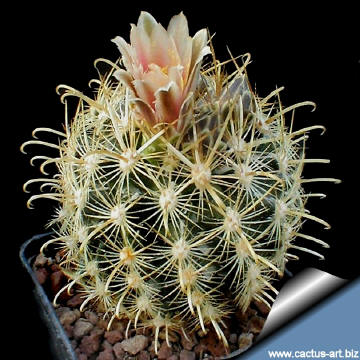 |
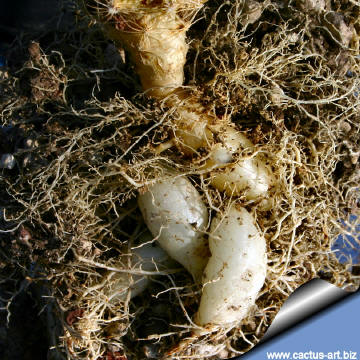 |
|
. |
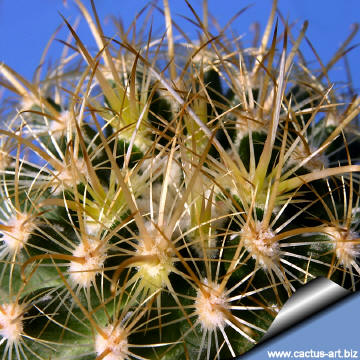 |
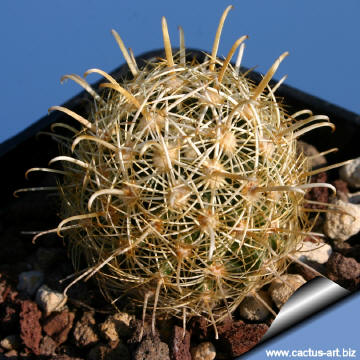 |
|
Advertising
|
|
|
|
|
|
|
Family:
Cactaceae (Cactus
Family) Ancistrocactus megarhizus
(Rose) Britton & Rose
In: Cactaceae 4: 4, 1923
Accepted
Scientific Name:
Ancistrocactus
scheeri
(Rose) Britton & Rose 1923
Published in: The Cactaceae; descriptions and
illustrations of plants of the cactus family 4: 4, f. 1, 1923
Origin: USA (Texas); Mexico (Nuevo León,
Tamaulipas).
Habitat: Grows under drip line of brush in Tamaulipan thorn scrub
community, on plains and low hills, sandy, loamy, silty, or gravelly
soils; 20-500 m;
Synonyms:
-
Echinocactus
scheeri
Salm-Dyck
Published in:
Cact. Hort. Dyck. 1849, 155. 1849
Pediocactus
scheeri (Salm-Dyck)
Halda 1998
- Sclerocactus scheeri
(Salm-Dyck) N.P. Taylor 1987
-
Ferocactus
scheeri (Salm-Dyck)
N.P.Taylor 1979
- Echinocactus megarhizus J. Rose
Note: A. scheeri is relatively similar above ground to the
related species A. brevihamatus, but the roots of
A. scheeri are frequently horizontally oriented, strongly tuberlike
and always separated from the stem by a fragile constriction, in
contrast to the short, succulent, vertical taproots of A.
brevihamatus; and also the stems of immature A. brevihamatus,
are not obscured by spines and are often flush with the soil surface,
whereas those of A. scheeri are nearly hidden by spines and fully
exposed above the soil.
Ribs on the stems of A. scheeri seem straighter and better
defined than ribs of A. brevihamatus, even prior to sexual
maturity.
Common name(s):
- Fishhook Cactus,
- Twisted Ribs Cactus
Listed in
CITES Appendix 2
|
|
|
|
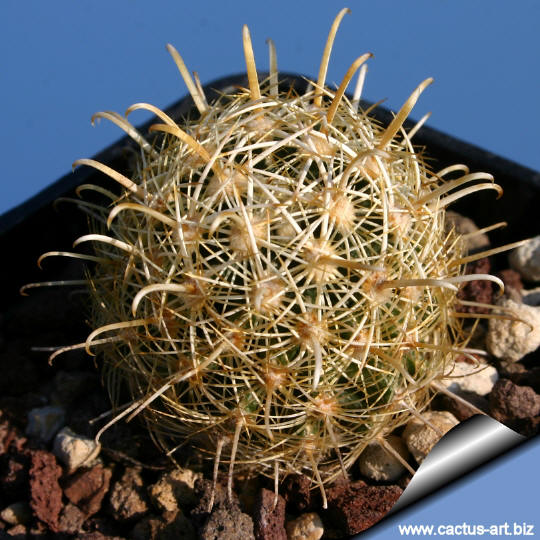
Cultivation: Need a relatively large or
deep pot to accommodate their extensive roots. They will do their best
with lots of sun and become stressed with inadequate light which could
result in poor growth, unnatural shapeweak spines, poor health or even
death. It does well
with cool winter time temperatures and will tolerate temperatures
down below -12°C or less if the roots are kept dry. Needs well drained soil. It flowers easily, but results will depend on a variety of growing
conditions.
Propagation: Relatively
easy to propagate by seeds.
Photo of conspecific taxa, varieties, forms and
cultivars of
plants belonging to the
ancistrocactus sheerii
complex:

 |
|